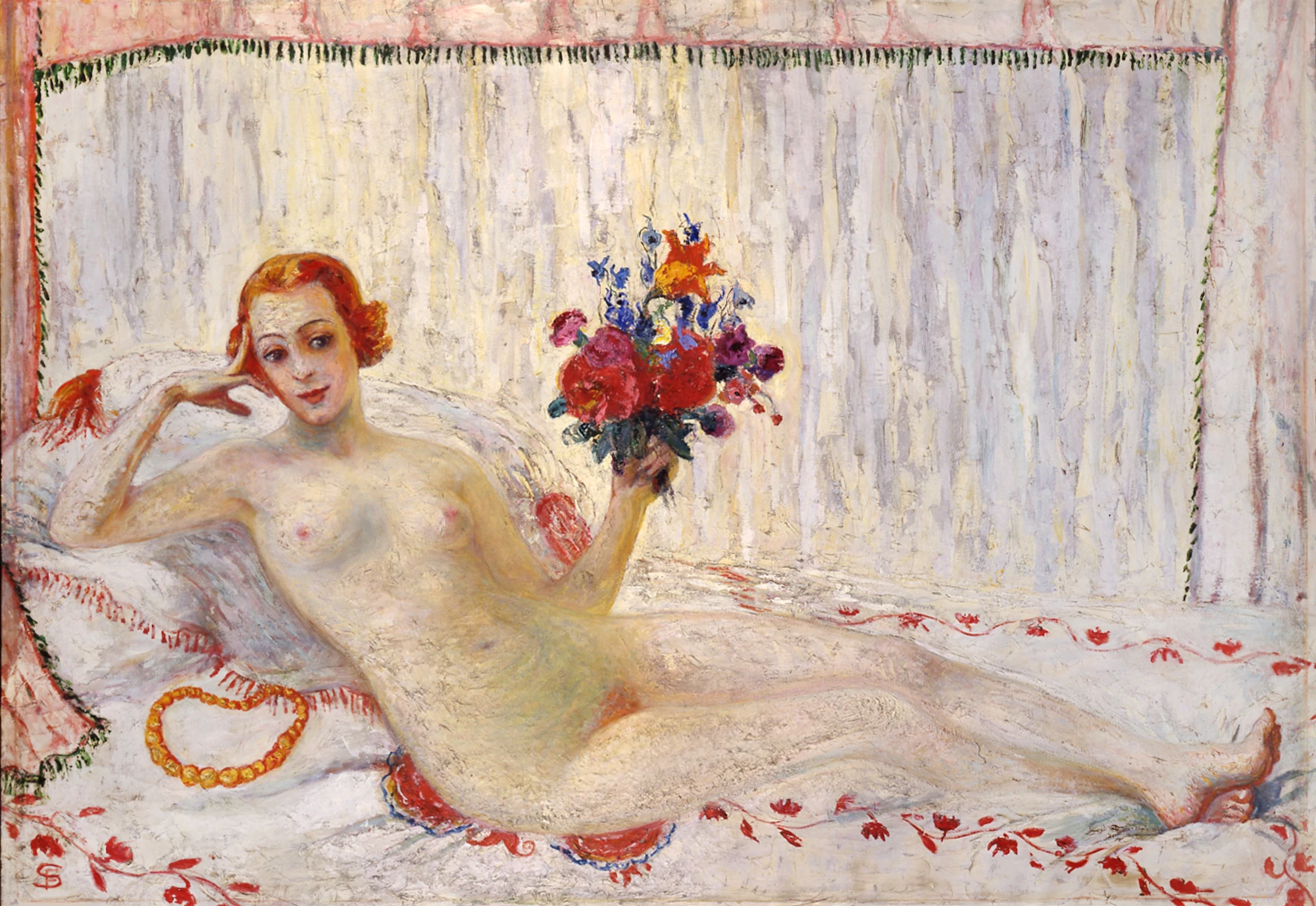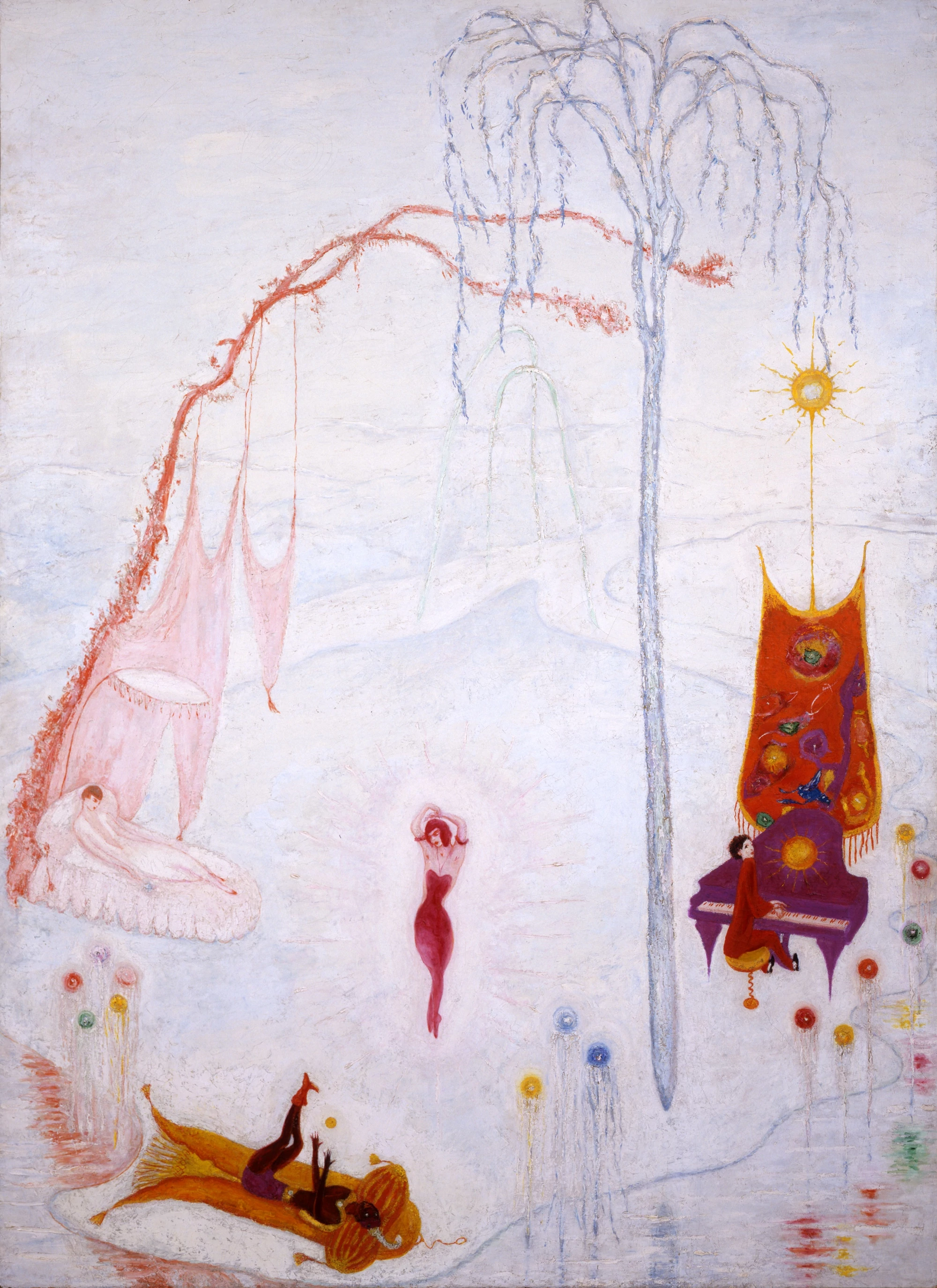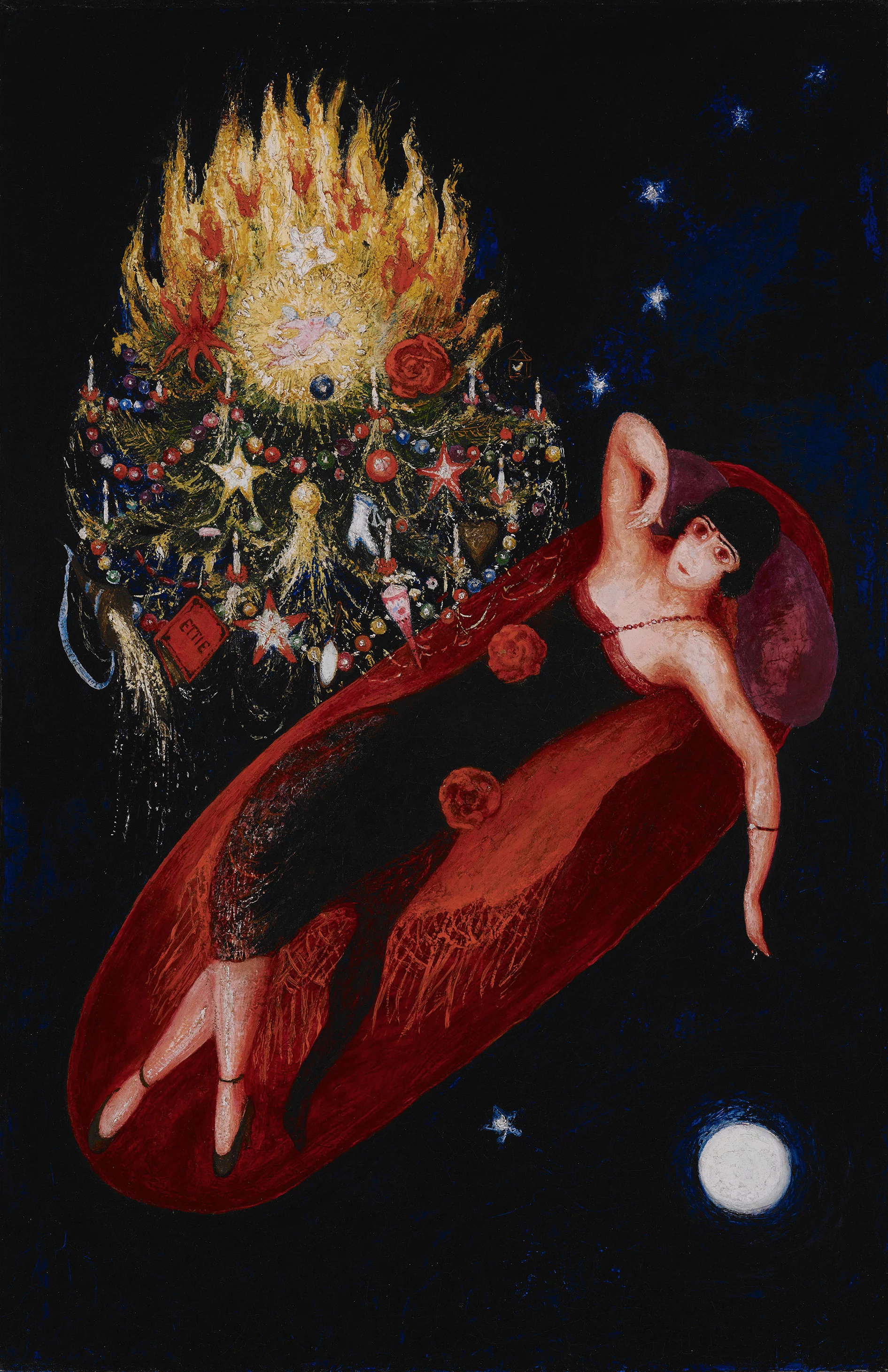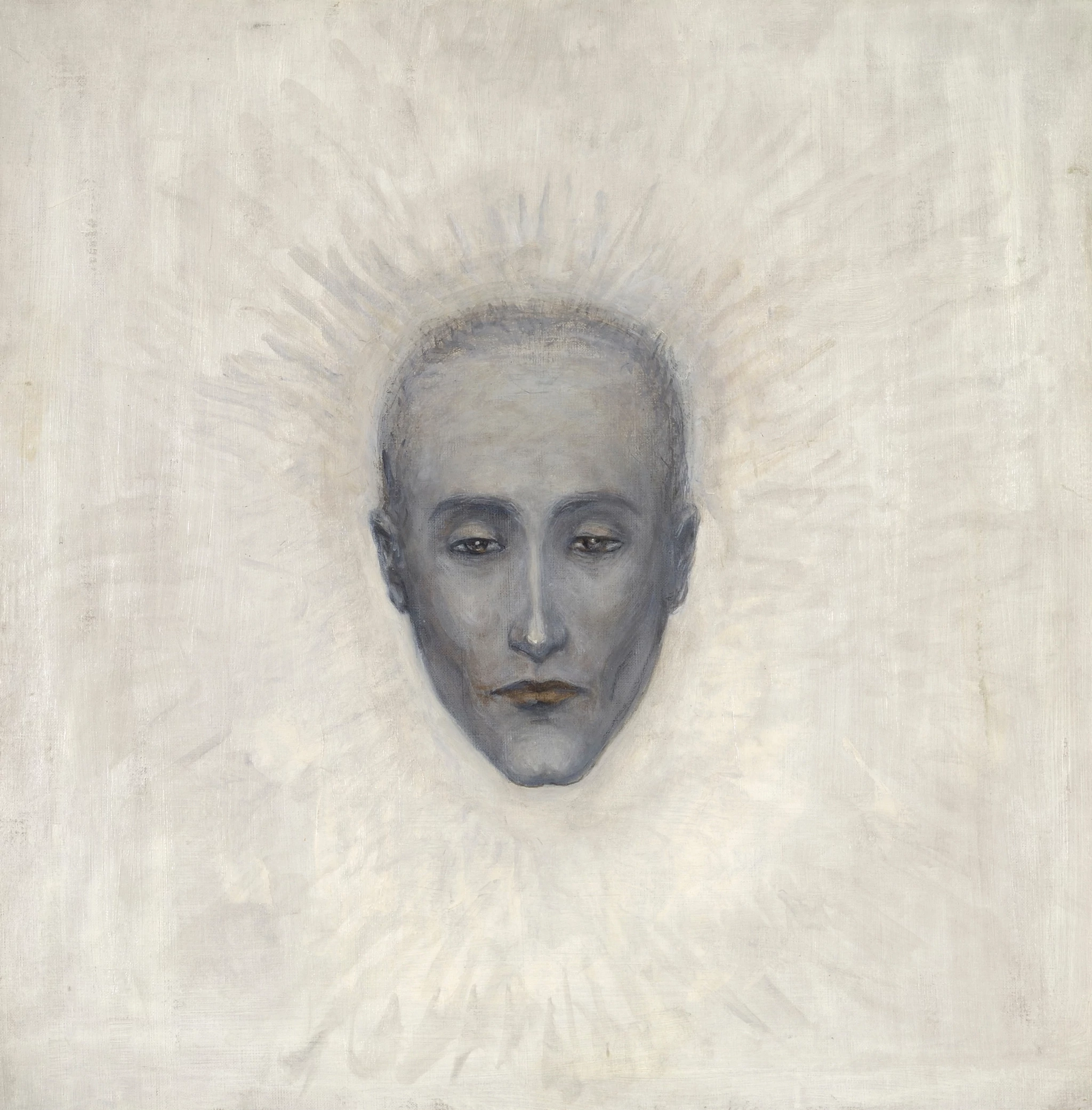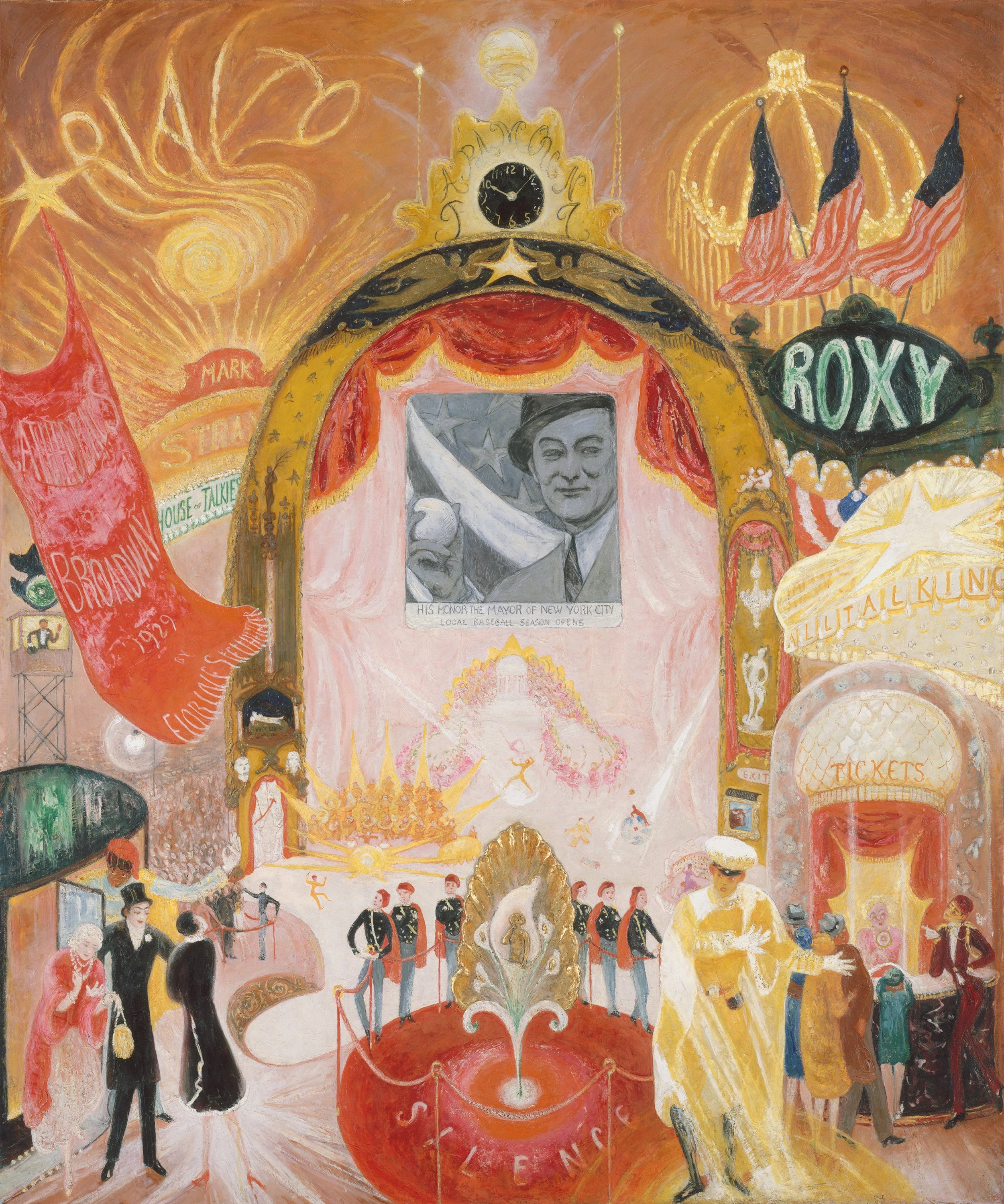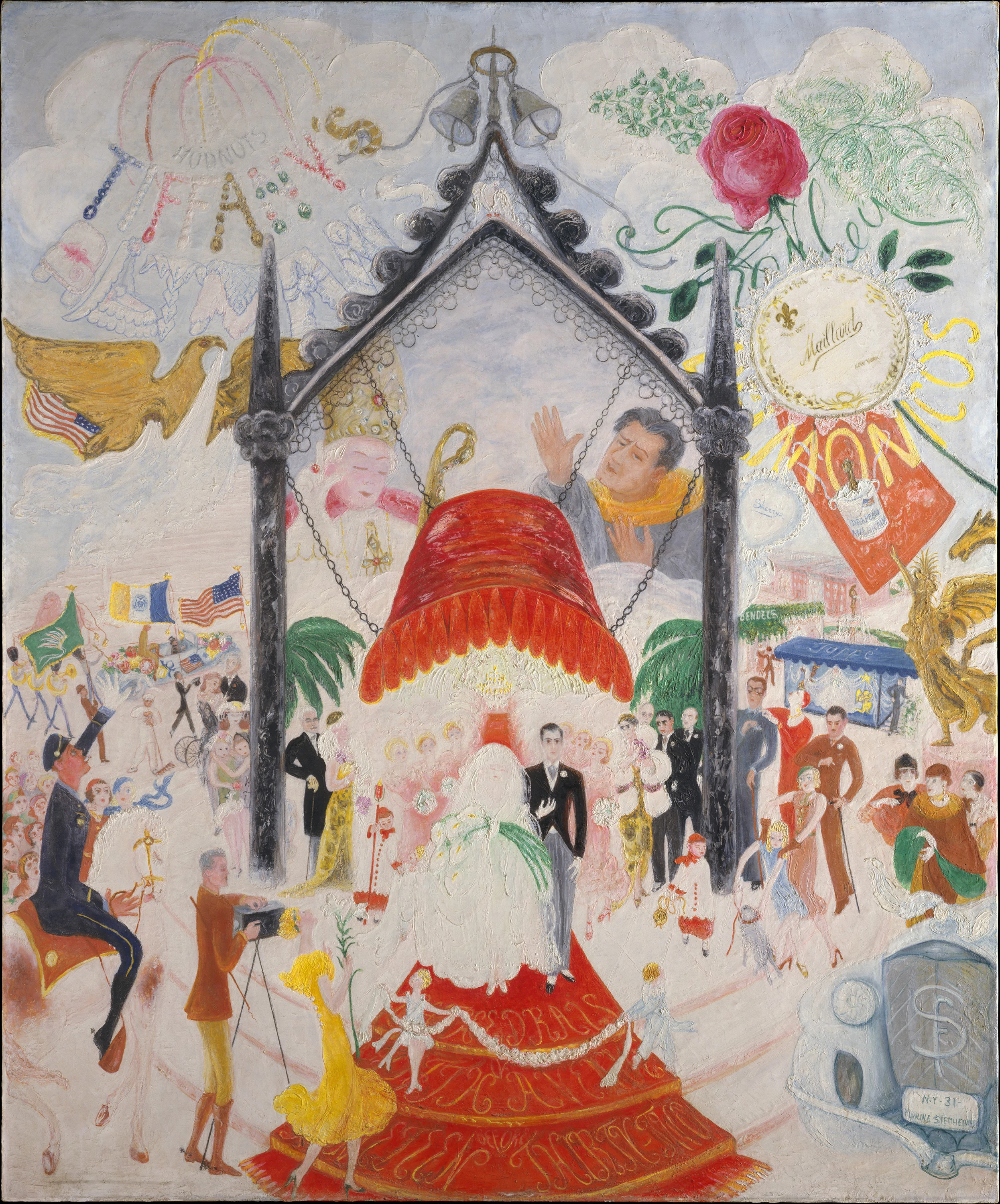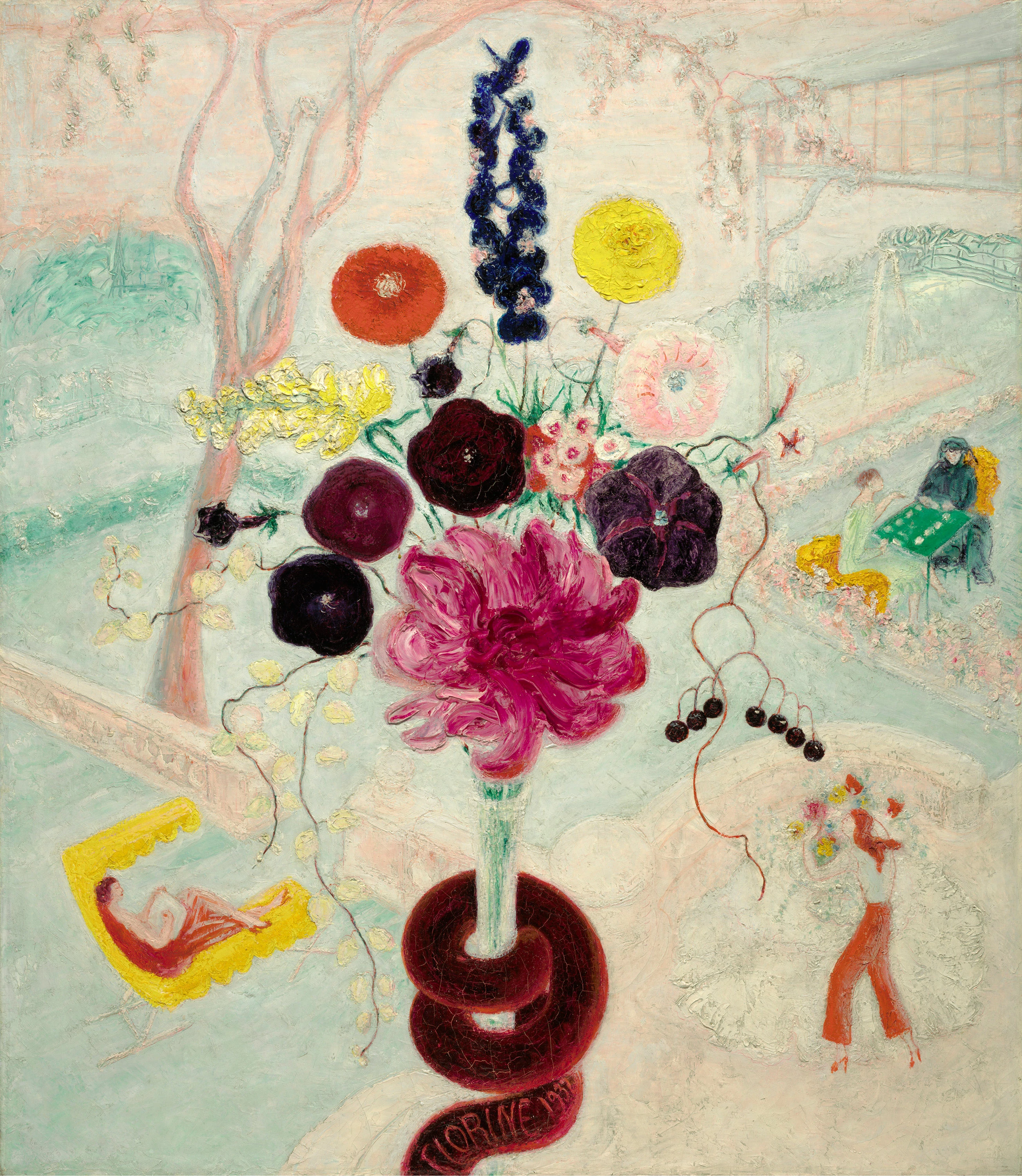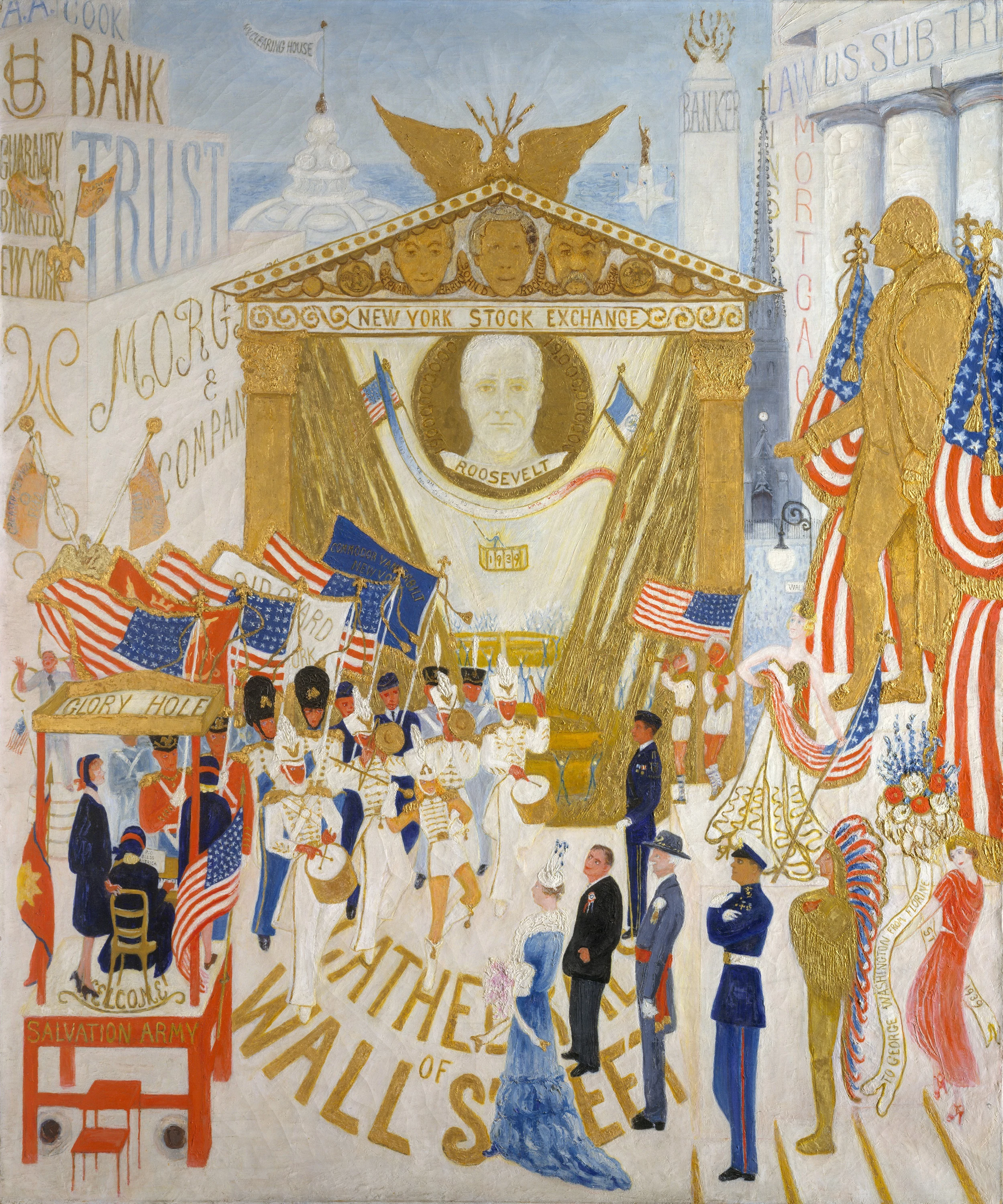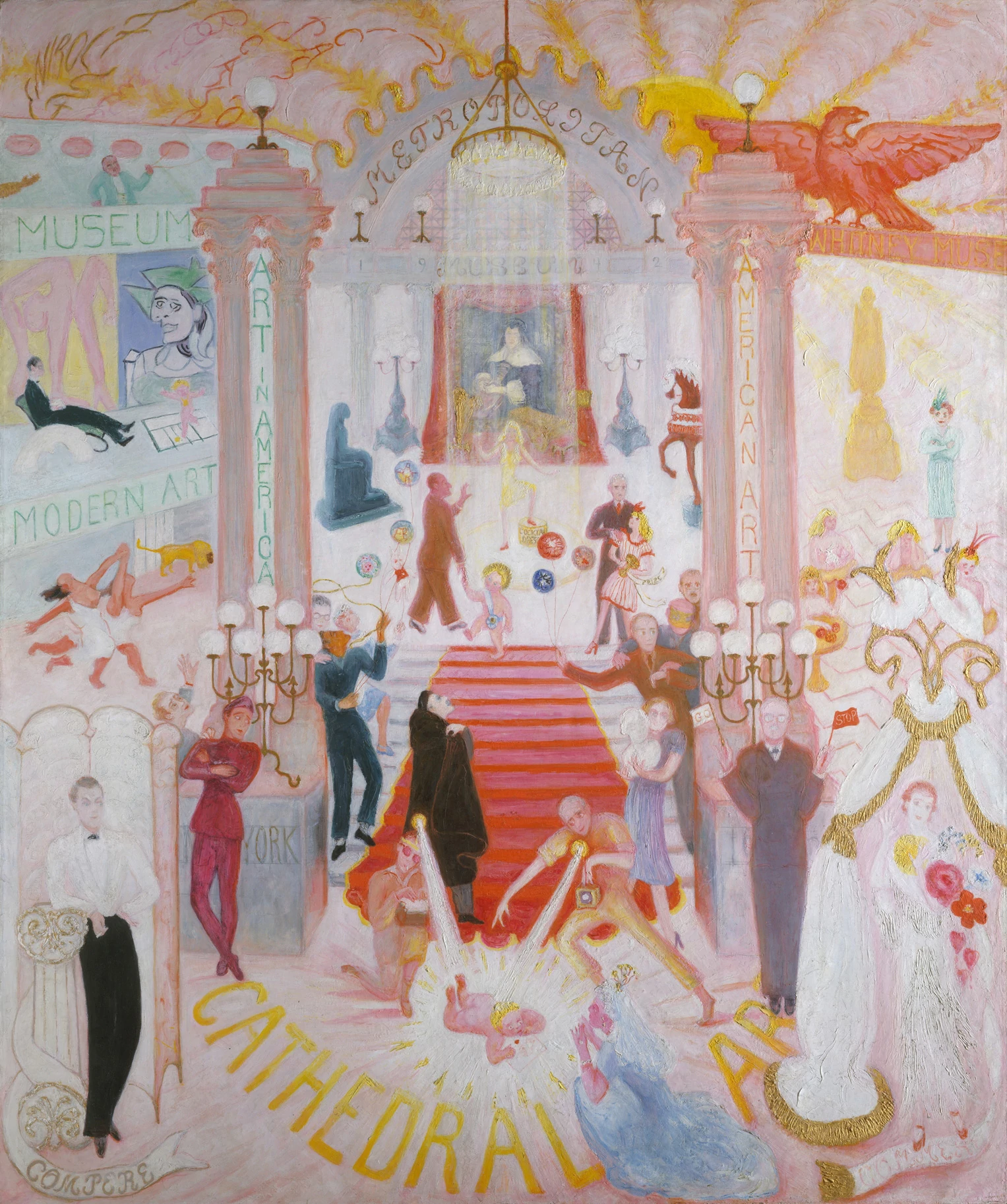Florine Stettheimer lived in a strange world of wealth and travel at the dawn of the 20th century. Born into a family of German Jews, Florine and her two youngest sisters, Carrie and Ettie, are archetypes of the new woman. They refused marriage, lived with their mother, smoked cigarettes, and wore white satin pants. The ‘Stetties’ spent their 30s in Germany, mingling with American ex-patriots, and studying art in Berlin, Stuttgart and Munich. At the beginning of WWI they returned to New York, where they turned their Upper West Side into a salon for the “contemporary literati, gay and polyglot New Yorkers and European expatriates”
The Stettheimer salon became a hub for art shows and parties, frequented by an extraordinary number of the great modern artists. Francis Picabia, Marcel Duchamp, Man Ray, Charles Demuth, and Marsden Hartley all drank and lounged and flirted with the Stettie sisters. In the middle of this milieu, Florine painted. She was uninterested in acceptance by the art critics of the time, and her work was part documentation and part mythology. She painted herself as a confidant odalisque, painted Duchamp perched on a Jack-on-the-Box, and recorded the decadent festival atmosphere of New York’s elite.
Though her paintings vibrate with color and life, Florine herself was a shy artist, uninterested in popular recognition. She had only one public solo show, at Manhattan’s Knoedler & Co art dealership, where none of her paintings sold. Florine considered her work to be an “entirely private pursuit” and requested that all her paintings be burned when she died. Luckily for us, her sister Ettie instead gifted her work to museums around the world, providing the future with a glimpse into the florid world of New York’s artistic playground at the turn of the century.
...
Got questions, comments or corrections about Florine Stettheimer? Join the conversation in our Discord, and if you enjoy content like this, consider becoming a member for exclusive essays, downloadables, and discounts in the Obelisk Store.
